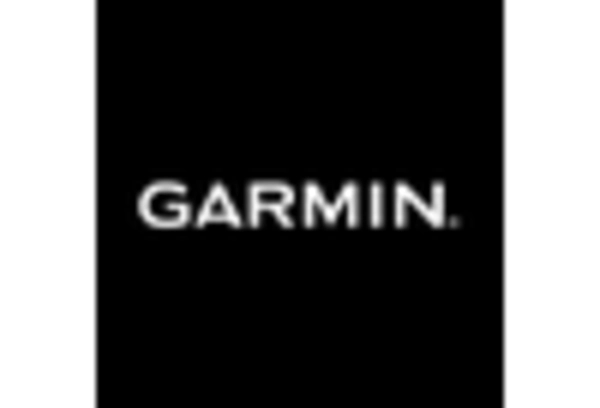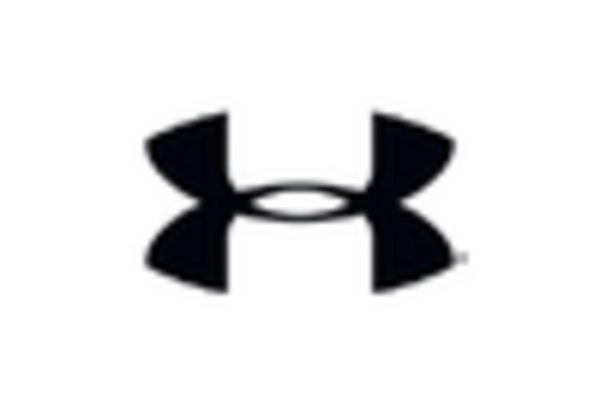Technological Advancements
Technological innovations are significantly influencing the Activity Tracking Fitness App Market. The integration of advanced features such as artificial intelligence, machine learning, and real-time data analytics enhances user experience and engagement. For instance, apps that utilize AI can provide personalized workout recommendations based on user data, which may lead to improved fitness outcomes. Furthermore, the proliferation of smartphones and wearable devices has made fitness tracking more accessible than ever. As of 2025, it is estimated that over 70% of smartphone users have downloaded a fitness app, indicating a robust market penetration. This technological evolution not only attracts new users but also retains existing ones, thereby fostering sustained growth in the Activity Tracking Fitness App Market.
Rising Health Consciousness
The increasing awareness of health and fitness among individuals appears to be a primary driver for the Activity Tracking Fitness App Market. As more people prioritize their well-being, the demand for tools that facilitate fitness tracking and health monitoring has surged. According to recent data, approximately 60% of adults engage in regular physical activity, which correlates with the rising adoption of fitness applications. This trend suggests that consumers are seeking innovative solutions to help them achieve their fitness goals, thereby propelling the growth of the market. The Activity Tracking Fitness App Market is likely to benefit from this heightened focus on personal health, as users increasingly turn to technology for guidance and motivation in their fitness journeys.
Increased Adoption of Wearable Technology
The growing popularity of wearable technology is a notable driver for the Activity Tracking Fitness App Market. Devices such as smartwatches and fitness bands are increasingly being utilized to monitor physical activity, heart rate, and other health metrics. This trend is supported by data indicating that the wearable technology market is projected to reach a valuation of over 60 billion dollars by 2026. As consumers become more accustomed to using wearables, the demand for compatible fitness applications is likely to rise. The synergy between wearable devices and fitness apps enhances user engagement, as individuals can track their progress in real-time. Consequently, the Activity Tracking Fitness App Market stands to gain from this integration, as it offers users a comprehensive approach to health and fitness management.
Expansion of Social Features in Fitness Apps
The incorporation of social features within fitness applications is becoming a crucial driver for the Activity Tracking Fitness App Market. Users are increasingly motivated by community engagement, competition, and social accountability. Features such as leaderboards, challenges, and social sharing options foster a sense of belonging and encourage users to remain active. Recent studies indicate that users who engage with social features are more likely to achieve their fitness goals, which suggests that these functionalities enhance user commitment. As fitness apps evolve to include more interactive and community-driven elements, the Activity Tracking Fitness App Market is poised for growth, appealing to a broader audience seeking both personal and social fitness experiences.
Growing Interest in Personalized Fitness Solutions
The shift towards personalized fitness solutions is emerging as a significant driver for the Activity Tracking Fitness App Market. Users are increasingly seeking tailored experiences that cater to their unique fitness levels, preferences, and goals. This trend is reflected in the rising number of apps that offer customizable workout plans and nutrition tracking features. Market data suggests that personalized fitness solutions can lead to higher user satisfaction and retention rates, as individuals are more likely to stick with programs that align with their specific needs. As the demand for personalized experiences continues to grow, the Activity Tracking Fitness App Market is expected to expand, with developers focusing on creating more adaptive and user-centric applications.
















Leave a Comment